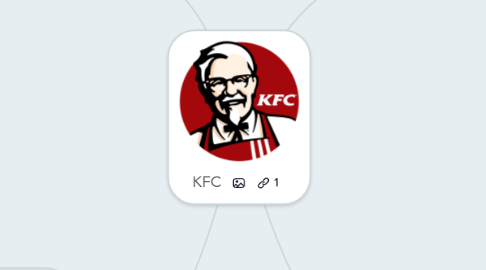
1. Environment
1.1. Key Partners
1.1.1. 1. Pepsi
1.1.2. 2. Food Suppliers
1.2. Key Resources
1.2.1. 1. Brand
1.2.2. 2. Sales network & logistics network
1.2.3. 3. Secret recipe
1.2.4. 4. Facilities for catering services
2. Finance
2.1. Cost Structure
2.1.1. 1. Costs of fast food restaurant chain
2.1.2. 2. Branding/communication
2.1.3. 2. Vehicles for catering services
2.1.4. 4. Product innovations
2.2. Revenue Streams
2.2.1. 1. Revenues from fast food restaurants
2.2.2. 2. Franchising
2.2.3. 3. Catering services
3. Products
3.1. Key Activities
3.1.1. 1. Management of fast food restaurant chain
3.1.2. 2. Management of logistics system
3.1.3. 3. Management of franchises
3.1.4. 4. Management of catering services
3.2. Value Propositions
3.2.1. 1. Fresh chilled chicken meat
3.2.2. 2. Secret recipe
3.2.3. 3. Affordable prices
3.2.4. 4. Fast service
4. Customers
4.1. Customer Relationships
4.1.1. 1. Customer orientation
4.1.2. 2. Individual agreements
4.1.3. 3. Collective agreements
4.2. Channels
4.2.1. 1. Fast food restaurant chain
4.2.2. 2. Home delivery
4.2.3. 3. Internet
4.2.4. 4. Social networks
4.2.5. 5. Television
4.2.6. 6. Outdoor advertising
4.3. Customer Segments
4.3.1. 1. Young people (16-25 years old)
4.3.2. 2. Students
4.3.3. 3. Early career workers
4.3.4. 4. Franchisees
